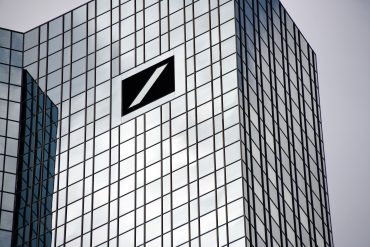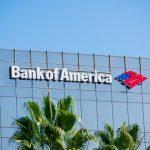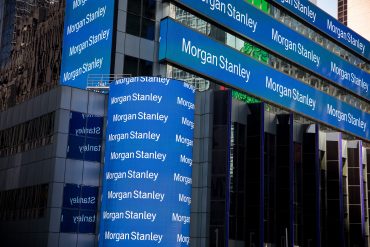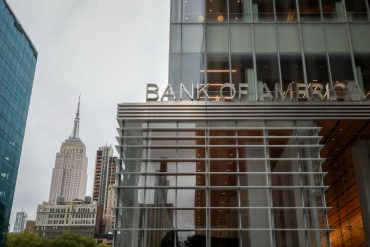
- Earnings
- European Banking
Deutsche Bank Posts €1.49B Profit, Best Quarter Since 2011
6 minute read

Deutsche Bank’s cost-cutting measures and diversified revenue streams drive highest quarterly profit since 2011
Key Takeaways
- Deutsche Bank shares surge 6% following second-quarter net profit of €1.485 billion that exceeded analyst forecasts by nearly 24%, marking a dramatic turnaround from a €143 million loss in the same period last year.
- Return on tangible equity hits 10.1% as the German lender’s cost-cutting measures reduce expenses by 26% year-over-year to €5.0 billion, improving the cost-to-income ratio to 62% below its 65% target.
- CET1 capital rose to 14.2%, giving management room to keep rewarding shareholders even as forthcoming regulatory changes (e.g., Basel IV) inflate risk-weighted assets.
Introduction
Deutsche Bank delivered a quarter that does more than beat numbers—it validates a multi-year transformationgrounded in tighter costs, a more predictable revenue mix, and a decidedly shareholder-friendly capital policy. The €1.485 billion second-quarter net profit—its highest since 2011—underscores how a universal bank can still compound value in a tougher rate, regulatory and competitive environment.
This performance matters because it validates Deutsche Bank’s multi-year restructuring efforts and positions the institution as a standout performer in European banking. The results showcase how traditional financial institutions can adapt and thrive amid evolving market conditions and increased competition from fintech companies.
Key Developments
Deutsche Bank’s second-quarter results reveal a comprehensive operational improvement across multiple business lines. According to CNBC, the bank reported net profit of €1.485 billion, significantly surpassing the €1.2 billion forecast by Reuters analysts.
Top-line resilience with operating leverage: Revenue of €7.804 billion broadly matched expectations, but the 34% YoY jump in profit before tax to €2.4 billion (excluding Postbank litigation effects) highlights the power of the cost base reset. Management stresses that roughly three quarters of group revenue now comes from more stable, annuity-like franchises—Corporate Banking, Private Banking, Asset Management, and FIC Financing—reducing reliance on volatile flow trading.
Fixed Income & Currencies (FIC) rose 11% despite patchy market conditions, while origination & advisory dropped 29% as deal-making and capital markets issuance stayed uneven. The CET1 ratio improved to 14.2% from 13.8%, reinforcing flexibility to pursue buybacks and higher dividends without compromising growth or buffers.
Market Impact
Investors rewarded execution, lifting the stock nearly 6% by mid-morning in London and keeping it among the top year-to-date performers on the DAX (circa +70%). Subsidiary DWS also rallied ~3.8%, riding the halo from stronger group profitability and the bank’s upbeat guidance on returns.
The subsidiary DWS Group also benefited from the positive sentiment, with shares climbing 3.8% following the parent company’s results announcement. Market participants responded favorably to the bank’s return on tangible equity of 10.1%, which exceeded expectations and demonstrated effective capital deployment.
Trading revenues provided particular strength, with the fixed-income and currencies division posting an 11% revenue increase despite challenging market conditions. However, the origination and advisory sector experienced a 29% decline amid market uncertainty and deferred client transactions.
Strategic Insights
Deutsche Bank’s success stems from its diversified business model, with 74% of revenues now generated from predictable streams including Corporate Banking, Private Banking, Asset Management, and Fixed Income & Currencies Financing. This diversification reduces dependence on volatile trading activities and creates a stable foundation for sustained growth.
The bank’s cost optimization strategy has yielded substantial results, with noninterest expenses dropping 26% year-over-year through branch closures and workforce reductions. The improved cost-to-income ratio of 62% falls well below the target of 65% and represents a significant operational achievement.
Investment opportunities have emerged from rising defense spending, with Deutsche Bank strengthening its advisory capabilities in this sector. Domestic political stability under Chancellor Friedrich Merz has improved client and investor sentiment, contributing to increased business volumes.
Expert Opinions and Data
Market analysts have praised the bank’s operational efficiency improvements and profitability metrics. A local trader highlighted the overall performance as “better than hoped,” particularly noting the return on tangible equity results that exceeded expectations. CEO Christian Sewing reiterated that shareholder distributions will rise as profitability and capital generation strengthen, positioning the bank to both invest and pay out, – “We are currently working on our strategy for the period beyond 2025. We want to become even more focused, efficient and powerful – and further strengthen cooperation across all areas.”
Bundesbank President Joachim Nagel’s warning that fresh tariffs could tip Europe toward recession was echoed internally—Deutsche Bank’s finance team cautioned about export headwinds and policy uncertainty—but the bank still maintains confidence in its route to target returns.
Conclusion
Deutsche Bank’s quarter is less about a one-off surge and more about a durable operating reset: double-digit RoTE, a sub-65% cost-to-income ratio, and a CET1 stack north of 14% collectively underpin a credible path to sustained higher payouts. The remaining structural overhang—Basel IV’s RWA inflation—is real, but management’s capital cushion, diversified earnings mix, and cost control leave it better placed than at any time since the financial crisis. For incumbents facing fintech competition and heavier regulation, this is a playbook: simplify, diversify, delever operating costs, and pay shareholders—confidently, but with Basel IV in the rear-view mirror.








